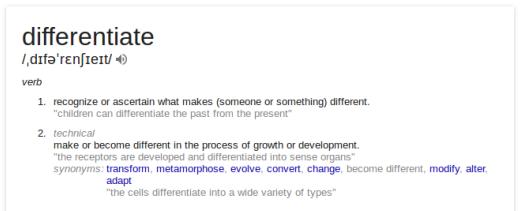For the ESL teacher, it’s a rare thing to have a class in which all of the children operate at exactly the same level. Very often, there’s the child who doesn’t speak, the near-native speaker, and a whole bunch of other levels of ability in-between. Writing a single lesson that will engage all of these children all of the time is, for most of us, the thought that keeps us up at night. How often do we see a book in the shop and think how perfect it would be for the stronger children, or hear a song and think how that is just what the weaker children need. We teachers cannot help ourselves, it’s just how we are. We spend countless hours wondering how we can create an even better learning environment than we already have. We cannot stand seeing children bored silly because the material is too easy, or disengaging out of sheer frustration. We understand that in differentiating our lessons, each child can connect with the material in a way and level that is meaningful for him or her.
Personally, I’ve tried all sorts of things out in my lessons in order to meet the needs of my pupils. Some things worked, and some things, well, some things still need improving. Here, I’ll share some of the things that worked, in the hope that others can use my experiences in their own teaching. But before we move on to my own experiences, it’s important to give a little background information so we all know we’re on the same page.

Thanks to Google search terms, it’s easy to find the definition for differentiation.
Putting that theory into practice, however, is another kettle of fish entirely.
There are different ways to differentiate in the ESL lessons, but first, it’s important to look at the difference between convergent and divergent differentiation. There is an essential difference between these two forms. In divergent differentiation, the child forms the starting point. Each child starts at his own level, with his own goals, and may use various materials to get there. In this case, the individuality of each child is accentuated, and the teacher strives to meet the needs of each child.
In convergent differentiation, the starting point is the common lesson objective that the children need to meet. The children all begin together with the basic instruction, and as they understand the material and the task at hand, they “drop off” to work on their own. Those children needing the most instruction stay on the longest, while those needing little to no instruction are free to work on their own.
I’ve tried both forms of differentiation, and experience tells me that while divergent differentiation can be a lot of fun, it’s also a load of work. For years, I created tasks at different levels, applied various styles of learning, assessed for different levels, all to help children realize a modicum of success, but at the end of the day, it was a lot to keep track of. I found it rewarding but oh so tiring, and was really pleased when I – finally – learned about convergent differentiation. (oh! The things I wished I’d learned earlier!) Of course, I still allowed children to choose different language tasks to work on, but with convergent differentiation, I decided on easier ways to provide instruction and scaffolding so that everyone could profit from the lessons.
Part of differentiating successfully was getting a handle on what the children could already do, and where they needed to go next. I’ve already written a blog in which I explained this process of writing semi-annual plans, so I won’t go into that again here.

Click here for a simple how-to sheet on changing a power point into a pdf handout: how-to-pdf-handout-from-ppt
After creating my semi-annual plans, I decided to create some simple scaffolding material for my weaker learners. I started by making handouts related to the power points I already used in my lessons. I printed enough copies for the weaker children, so they would have the words at hand during the lessons, always keeping a few extra copies around in case other children felt the need for a “cheat sheet” during the lesson. I figured, using a “cheat sheet” would be slow going for those who already knew the words, so children would only use it if they really needed it. In the end, I was proven right – children who needed the support were glad of the handout, and those who didn’t really need it, soon left the handouts untouched.
Another way I applied differentiation was to sort out the words we would be learning into three categories: need to know, really ought to know, and challenge words. The words that everyone needed to know were put on the handouts. These were the words that I expected everyone in the class to recognize and correctly apply in whatever exercises they had to complete. The words I hoped most children would learn were put on the handout as well, but only if they fit. These were the words that the weakest children didn’t need to have, but that most children in the class were expected to learn. And lastly, I always had a few extra challenge words up my sleeve, so that even the strongest speakers had something to learn.
There’s more, of course. I applied multiple intelligences to my lesson planning, and had children reading at their own level, all of which contributed to a varied palette of teaching and learning. I’m curious what techniques others have applied in their ESL teaching? Please share!


2 thoughts on “Differentiation, why bother?”